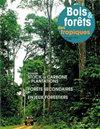提高角豆树耐水能力的土壤微生物潜力评价与管理
IF 0.6
4区 农林科学
Q3 FORESTRY
引用次数: 0
摘要
角豆树(Ceratonia siliqua L.)是地中海盆地的生态、文化和工业组成部分,近几十年来其丰度一直在下降。已经确定了三个促成因素:有利于其他植物物种的农业政策,导致栖息地破碎的地中海海岸线日益城市化,以及不利的气候条件,特别是更长时间的干旱。角豆树对水资源的依赖是一个被低估的特性,但对其生存至关重要。优化角豆与菌根真菌之间的共生关系已被提出作为一种有希望的策略,以提高其对水分胁迫的抵抗力。然而,对环境中植物-微生物相互作用的更全面的看法似乎对于可持续地解决植物适应环境胁迫的挑战至关重要。该论文的中心假设是角豆树与其栖息地中一些先锋植物的微生物群之间相互作用的管理可能是角豆树更好地适应干旱的关键。目的是(i)评估与角豆豆一起生活的植物相关的微生物群的特异性,以及(ii)量化它们对角豆豆生长和抗缺水的影响。结果表明,放线菌、变形菌和子囊菌在研究生境中占主导地位,摩洛哥北部和南部之间存在显著的功能差异。普通的园艺实验表明,微生物群的类型是影响角豆生长和抗性的主要驱动因素,根据水分状况有很强的变化。事实上,角豆树的原生微生物群在不受限制的水分条件下是最有效的,但对干旱的抵抗力很小。另一方面,与lentisk相关的微生物群提供了最佳的生长抗性权衡。这种益处似乎归因于更高丰度的DSE(暗隔内生菌)真菌和响应水分胁迫的菌根定植的增加。因此,将角豆素纳入技术实践,作为有益微生物群管理的杠杆,可以代表一种未来的战略,使角豆适应地中海盆地日益严重的干旱。本文章由计算机程序翻译,如有差异,请以英文原文为准。
Evaluation and management of soil microbial potentialities for improving the carob tree tolerance to water constraints
The carob tree (Ceratonia siliqua L.), an ecological, cultural and industrial component of the Mediterranean basin, has been experiencing a decline of its abundance in recent decades. Three contributing factors have been identified, an agricultural policy in favour of other plant species, an increasing urbanisation of the Mediterranean coastline, which leads to habitat fragmentation, and negative climatic conditions, notably longer periods of drought. The dependency of the carob tree on water resources is an underestimated trait, and yet a crucial one for its survival. The optimisation of the symbiotic association between carob and mycorrhizal fungi has been proposed as a promising strategy to improve its resistance to water stress. However, a more holistic view of plant-microorganism interactions within the environment seems essential to sustainably address the challenges of plant adaptation to environmental stresses. The central hypothesis of the thesis is that the management of interactions between the carob tree and the microbiota of some pioneer plants in its habitat could be the key for a better adaptation of the carob tree to drought. The objectives were (i) to assess the specificity of microbiota associated with plants living with the carob, and (ii) to quantify their impact on carob growth and resistance to water deficit. The results showed a predominance of actinobacteria, proteobacteria and ascomycetes in the studied habitats, with significant functional divergences between North and South of Morocco. Common garden experiments revealed that the type of microbiota was a major driver of the effect on carob growth and resistance, with strong variations depending on the water status. Indeed, the native microbiota of the carob tree is one of the most efficient under non-limiting water conditions but confers little resistance to drought. On the other hand, the microbiota associated with the lentisk provides the best growth-resistance trade-off. This benefit seems to be attributable to a higher abundance of DSE (dark septate endophytes) fungi and an increase in mycorrhizal colonisation in response to water stress. The integration of lentisk in technical practices as a lever for the management of a beneficial microbiota could therefore represent a future strategy for the adaptation of carob to increasing drought in the Mediterranean basin.
求助全文
通过发布文献求助,成功后即可免费获取论文全文。
去求助
来源期刊

Bois et Forets Des Tropiques
FORESTRY-
CiteScore
1.50
自引率
16.70%
发文量
31
审稿时长
>12 weeks
期刊介绍:
In 1947, the former Tropical Forest Technical Centre (CTFT), now part of CIRAD, created the journal Bois et Forêts des Tropiques. Since then, it has disseminated knowledge and research results on forests in intertropical and Mediterranean regions to more than sixty countries. The articles, peer evaluated and reviewed, are short, synthetic and accessible to researchers, engineers, technicians, students and decision-makers. They present original, innovative research results, inventions or discoveries. The journal publishes in an international dimension. The topics covered are of general interest and are aimed at an informed international audience.
 求助内容:
求助内容: 应助结果提醒方式:
应助结果提醒方式:


